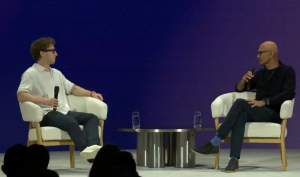No silver linings in GigaOm’s demise
![]() The failure of a business is sometimes cause for jubilation at that company’s competitors, but I didn’t detect much glee in the reaction of my SiliconANGLE colleagues this week to the sudden shutdown of the technology news site GigaOm. Rather, there was sadness that a media company that championed respect for its readers and that wouldn’t pander to advertisers couldn’t make a go of it.
The failure of a business is sometimes cause for jubilation at that company’s competitors, but I didn’t detect much glee in the reaction of my SiliconANGLE colleagues this week to the sudden shutdown of the technology news site GigaOm. Rather, there was sadness that a media company that championed respect for its readers and that wouldn’t pander to advertisers couldn’t make a go of it.
I know nothing of the inner workings of GigaOm or the business factors that contributed to its failure. I do know that I was for several years a member of its loose federation of “research analysts,” and perhaps that’s symbolic of bigger issues.
While GigaOm did a superb job of communicating with me over the years, it never asked me for an opinion or sent any business or even media inquiries my way. Assuming I’m not alone, then I question the wisdom of maintaining a program that delivered so little business benefit. It seemed like an expensive luxury.
But GigaOm never did anything halfway. Unlike the many bootstrapped businesses that have emerged from the rubble of the mainstream media industry, GigaOm raised more than $22 million, assembled a staff of top-flight journalists and launched research and events operations into decidedly hostile markets.
How GigaOm managed to raise so much money in a market most investors would consider poisonous is beyond me and a credit to founder Om Malik. Even more remarkable is that Malik put his faith in a traditional media model that has been in freefall practically since the day GigaOm was formed.
Until a few years ago, media was one of the most stable and predictable businesses on the planet. Publishers recruited high-quality subscribers by producing valuable products and then monetized those audiences through a variety of means ranging from events to direct marketing to reprint sales. Oh, yes, and advertising.
Advertising in Freefall
![]() Advertising has become the metaphor for Internet disruption. The Web’s bottomless inventory, combined with the cost efficiency of search engine marketing, has sent mass-market advertising rates plummeting and traditional publishers into crisis. Those that have survived have cut costs and staff to the bone while all but erasing the traditional barriers between promotional and editorial content with a tactic called “native advertising.” Forbes magazine’s print edition set a new low water mark for the practice this month with a cover promotion for a sponsored supplement by Fidelity that wasn’t even labeled as advertising.
Advertising has become the metaphor for Internet disruption. The Web’s bottomless inventory, combined with the cost efficiency of search engine marketing, has sent mass-market advertising rates plummeting and traditional publishers into crisis. Those that have survived have cut costs and staff to the bone while all but erasing the traditional barriers between promotional and editorial content with a tactic called “native advertising.” Forbes magazine’s print edition set a new low water mark for the practice this month with a cover promotion for a sponsored supplement by Fidelity that wasn’t even labeled as advertising.
GigaOm would have none of this. It never adopted native advertising, nor did it irritate readers with tactics like overlay ads and auto-play videos. Its philosophy was that good journalism would attract a high quality audience that advertisers would pay to reach. It’s a model that worked well for more than 200 years, but it doesn’t work anymore.
The media business today is a numbers game driven by an insatiable appetite for traffic. Successful new-media companies either count their daily unique visitors in the millions (BuzzFeed and Upworthy) or cater to well-heeled and influential niche audiences (TechCrunch and The Politico). GigaOm was an outlier. Its technology coverage was too geeky to attract millionaires, but too narrow to generate seven-digit daily page views. It was stuck in the middle, and the Internet has made the middle a very bad place to be.
Ironically, some of the newest champions for quality journalism are the very same outlets that pioneered click-baiting and top-10 lists. Buzzfeed appears to be carrying through on its 2013 promise to hire more than 200 reporters and editors, and UpWorthy recently hired an editorial director. Another set of new players are corporate news operations like Cisco’s The Network, which are contracting with laid-off veterans to produce some very good analysis.
But for all these operations, quality editorial is a loss leader, just as it was in newspapers and magazines of yore. But there is hope in their examples. Mathew Ingram, who has long been one of my favorite commentators on digital media, recently voiced an optimistic view on the future of journalism, noting that the collapse of big media institutions has enabled new ideas to flourish. “Journalism has been freed from its confines, and is available to anyone, anywhere, at any time. And that can be very, very powerful,” he wrote.
The unfortunate irony: Ingram lost his job this week with the shutdown of GigaOm.
A message from John Furrier, co-founder of SiliconANGLE:
Your vote of support is important to us and it helps us keep the content FREE.
One click below supports our mission to provide free, deep, and relevant content.
Join our community on YouTube
Join the community that includes more than 15,000 #CubeAlumni experts, including Amazon.com CEO Andy Jassy, Dell Technologies founder and CEO Michael Dell, Intel CEO Pat Gelsinger, and many more luminaries and experts.
THANK YOU













